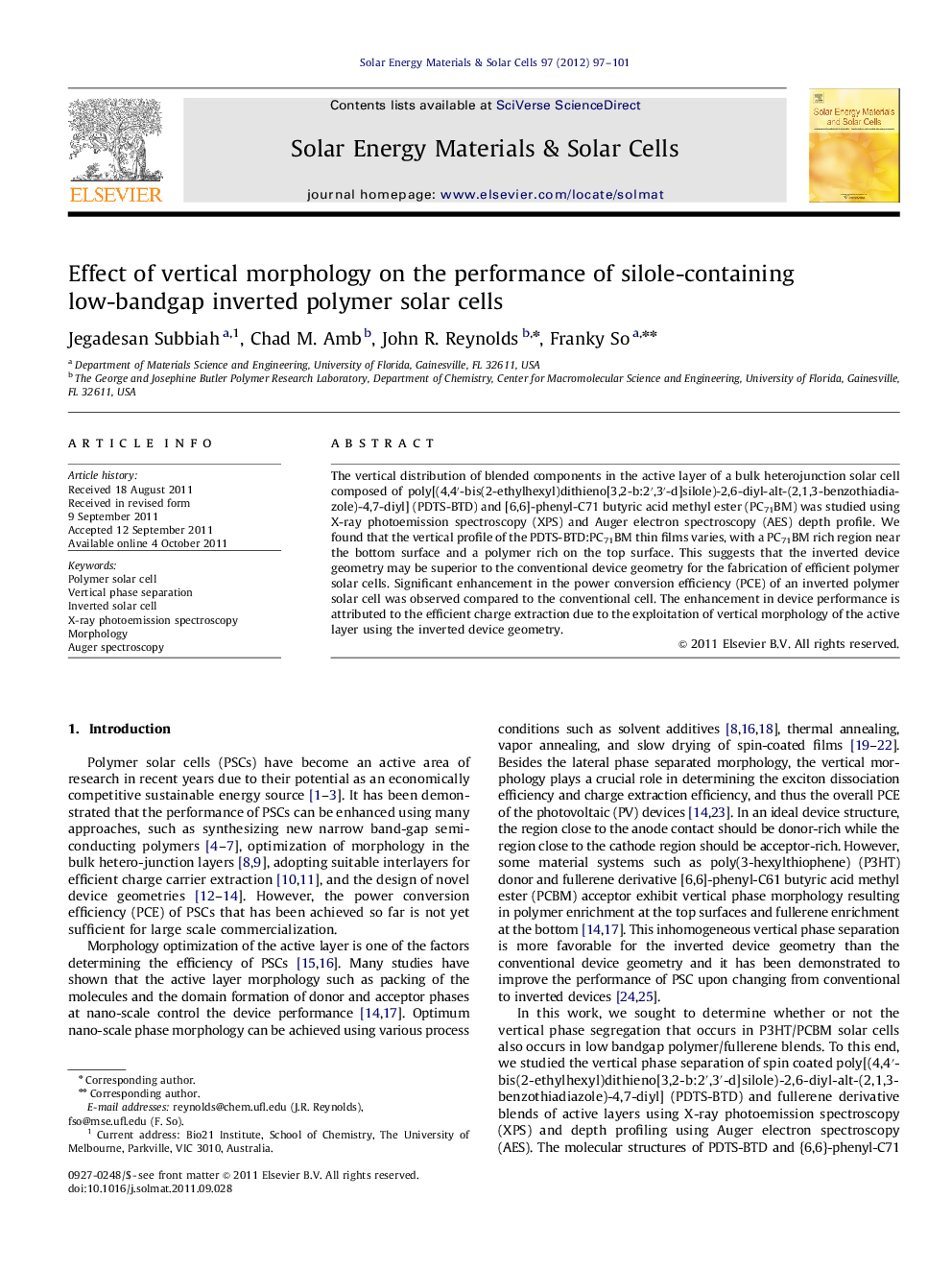| Article ID | Journal | Published Year | Pages | File Type |
|---|---|---|---|---|
| 78652 | Solar Energy Materials and Solar Cells | 2012 | 5 Pages |
The vertical distribution of blended components in the active layer of a bulk heterojunction solar cell composed of poly[(4,4′-bis(2-ethylhexyl)dithieno[3,2-b:2′,3′-d]silole)-2,6-diyl-alt-(2,1,3-benzothiadiazole)-4,7-diyl] (PDTS-BTD) and [6,6]-phenyl-C71 butyric acid methyl ester (PC71BM) was studied using X-ray photoemission spectroscopy (XPS) and Auger electron spectroscopy (AES) depth profile. We found that the vertical profile of the PDTS-BTD:PC71BM thin films varies, with a PC71BM rich region near the bottom surface and a polymer rich on the top surface. This suggests that the inverted device geometry may be superior to the conventional device geometry for the fabrication of efficient polymer solar cells. Significant enhancement in the power conversion efficiency (PCE) of an inverted polymer solar cell was observed compared to the conventional cell. The enhancement in device performance is attributed to the efficient charge extraction due to the exploitation of vertical morphology of the active layer using the inverted device geometry.
► Vertical distribution of blended components in the active layer. ► Both XPS and Auger electron spectroscopy were used. ► The bottom of the polymer blend film is PCBM rich. ► Enhancement in device performance is attributed to the vertical phase morphology.
